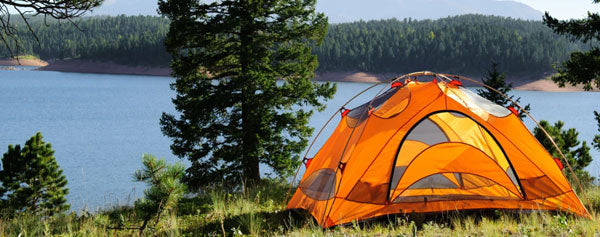Lorem ipsum dolor sit amet
Tent Care 101

Tent Care 101: Keep Your Tent Trail-Ready for Years
Tents tend to be fairly durable and, with the right care and some light maintenance, can serve you well for many years. By following our suggestions here in Tent Care 101, your tent will be a piece of gear you’ll be able to enjoy for many hiking and camping trips.
Finding a Spot
When choosing a site in the backcountry, look for an established spot free of excessive vegetation and rocks that could damage your tent floor. Ideally, this spot should be relatively flat.
Once you've chosen your site, clear away sticks, stones, and other debris. A ground cloth is the best way to protect your tent floor from tears, abrasions, and moisture. Here are a few tips:
- Fitted footprints from your tent manufacturer are easy to use but pricier.
- If using a polyethylene sheet, trim it smaller than the tent floor (1–2 inches for backpacking tents, 3–4 inches for larger tents).
- Never let the ground cloth extend beyond the tent edge—this could trap water under your tent.
Set Up Your Tent
Practice setting up your tent at home to check its condition and ensure all parts are present. A properly set-up tent should be taut, with no sagging parts:
- Stake it out or use guy lines to tie to trees or rocks.
- Keep it taut to prevent fly sag and interior condensation.
- Set up in the shade when possible—UV rays degrade fabric over time.
Be gentle when assembling poles—don’t let the shock cord snap them together. Join poles carefully, and when disassembling, start from the center to ease cord tension.
If a pole breaks, options include:
- Aluminum poles: Use a replacement pole sleeve (tube-style).
- Fiberglass poles: Campmor offers replacement pole sections.
- Steel poles: Try PVC tubing or contact the manufacturer.
Going In and Out
Leave shoes outside to prevent dirt from wearing the tent floor. Consider using a small mat or throw rug just inside the door to wipe feet.
Breaking Down Your Tent
The most important rule: your tent must be dry and clean before storage. If it's wet at the campground, dry it out at home within 24 hours. Here's how to pack it:
- Lay the tent flat, floor down. Use the stuff sack as a folding guide.
- Fold the fly inside the tent layers.
- Wrap poles and stakes in their bags and roll tightly inside the tent.
- Push air out as you roll. Done properly, it should easily fit in the bag.
At Home
Set up a new tent at home before your trip. This ensures you're not missing parts and helps in case of setup in the dark or rain.
Do not machine wash tents! Avoid soaps and scrubbing. If necessary:
- Use a sponge and non-detergent soap for hand washing.
- Never use a top-loading washer—these can damage fabric and coatings.
- A front-loading washer may work but is still not ideal.
Waterproofing & Seam Care
Most tents come factory seam-sealed with tape. Over time, you may need to reseal them, especially if:
- Two coated materials meet and are exposed to elements.
- The seam tape is worn or peeling.
Use seam sealer sparingly—two light coats are better than one heavy one.
Mildew Prevention
Never store a wet tent. Mildew can damage the fabric beyond repair. If mildew appears:
- Set up the tent and clean affected areas with a damp sponge.
- Mix 1 cup lemon juice and mild soap in 1 gallon of water. Wash gently.
- Rinse and allow to fully dry before storage.
Note: Mildew stains may remain even after treatment. Prevention is key—always dry your tent before long-term storage.
Happy camping—and take care of your tent so it can take care of you!







